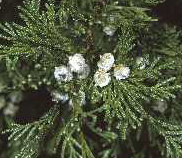
On-line Proceedings of the
2009 Atlantic White-Cedar Symposium
The Ecology and Management of
Atlantic White-Cedar (Chamaecyparis thyoides) Ecosystems
A Symposium held on June 9, 10, and 11, 2009 at the
City Hotel and Bistro in Greenville, North Carolina - USA